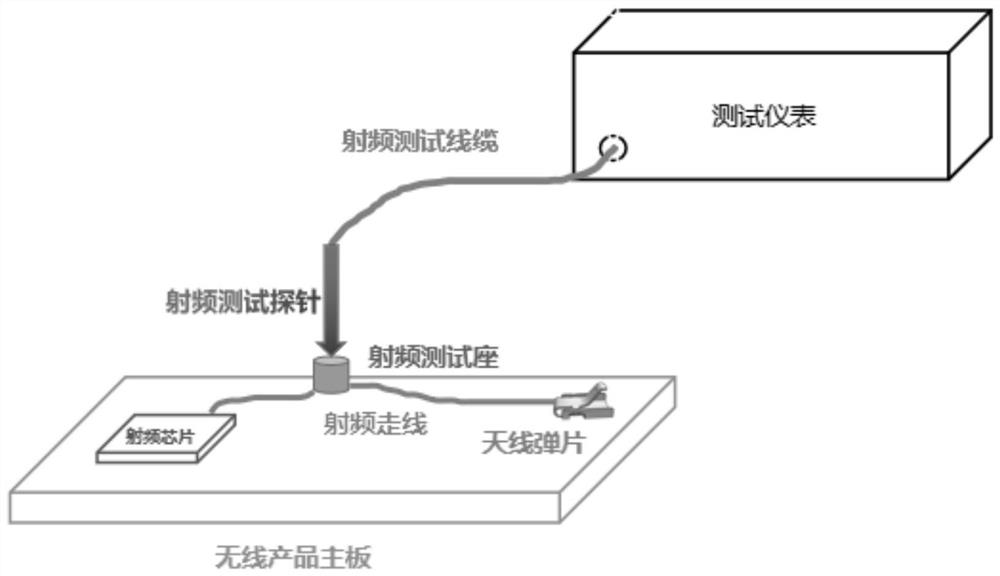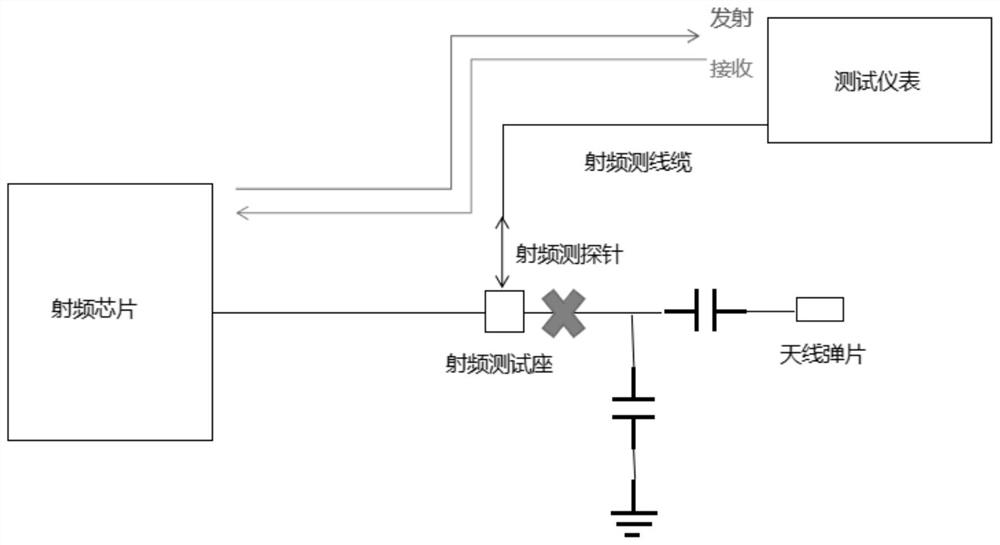Embedded tuning circuit board probe for testing radio frequency signals based on radio frequency-free test socket
A radio frequency test socket and radio frequency signal technology, applied in the direction of measuring electricity, measuring electrical variables, and electronic circuit testing, etc., can solve problems such as weakening the effect of impedance matching, and achieve the effect of ensuring effectiveness, convenient application, and reducing operational complexity.
- Summary
- Abstract
- Description
- Claims
- Application Information
AI Technical Summary
Problems solved by technology
Method used
Image
Examples
Embodiment 1
[0072] see Figure 12 , the figure shows the specific circuit form of the antenna matching circuit and tuning components of a certain brand of wireless product motherboard, PORT1 represents the RF chip end, PORT2 represents the test instrument end, and the antenna shrapnel (ANT CLIP CONTACT) to PORT1 is the antenna matching The circuit is composed of capacitor C2 and inductor L3. The circuit between the antenna shrapnel and PORT2 is a tuning component, from Figure 9 It can be seen that the circuit of the tuning component and the antenna matching circuit are matched together to form a dual-port symmetrical structure network, and the purpose is to ensure the symmetry of the RF S parameters of port 2 (PORT2) and port 1 (PORT1). Since the antenna supports the two frequency bands N78 and N79 at the same time, according to the composition of the wireless product antenna matching circuit (capacitor C2 and inductor L3), after debugging, it is found that it is necessary to use single-...
Embodiment 2
[0089] see Figure 17 , Figure 23-25 , Figure 17 There are three circuit parts, ABC, respectively, and the C part circuit is the antenna matching circuit of the wireless product motherboard (4G antenna). The matching form used in the frequency band, that is, when the circuit of part C is changed, the circuits of parts A and B are adjusted to achieve the overall symmetrical form of ABC. After debugging, it is found that the single-pole double-throw RF switches U4 and U5 in the B frame need to be used to switch the π-type tuning circuit series adjustable capacitor C224, and the single-pole four-throw RF switches U6 and U7 in the B frame need to be used. In order to ensure symmetry, the values of the components switched to the ground must be the same for the switching of the component values on the two branches connected in parallel to the ground of the tuning circuit.
[0090] When the RF chip works in the B5 frequency band (824-894MHz), the single-pole double-throw switc...
Embodiment 3
[0101] see Figure 20-22 , since the symmetrical form of the circuit can be composed of a variety of components selected and arranged in specific settings, it should not be understood that the implementation of the present invention is limited to the examples in the description, such as the commonly used T-type and π-type symmetrical network forms. According to the number of components, it can also be divided into one-stage parallel π-type, three-stage π-type and three-stage T-type, and the tuning components mentioned in the present invention include but are not limited to the above-mentioned forms.
[0102] The advantages of the present invention are:
[0103] 1) By using the present invention, the radio frequency test socket can be directly omitted, and the tuning component with impedance matching function is embedded in the package shell, welded on the tuning component through the signal pin, and directly contacts the antenna shrapnel through the signal pin to form a path; ...
PUM
 Login to View More
Login to View More Abstract
Description
Claims
Application Information
 Login to View More
Login to View More - R&D
- Intellectual Property
- Life Sciences
- Materials
- Tech Scout
- Unparalleled Data Quality
- Higher Quality Content
- 60% Fewer Hallucinations
Browse by: Latest US Patents, China's latest patents, Technical Efficacy Thesaurus, Application Domain, Technology Topic, Popular Technical Reports.
© 2025 PatSnap. All rights reserved.Legal|Privacy policy|Modern Slavery Act Transparency Statement|Sitemap|About US| Contact US: help@patsnap.com



